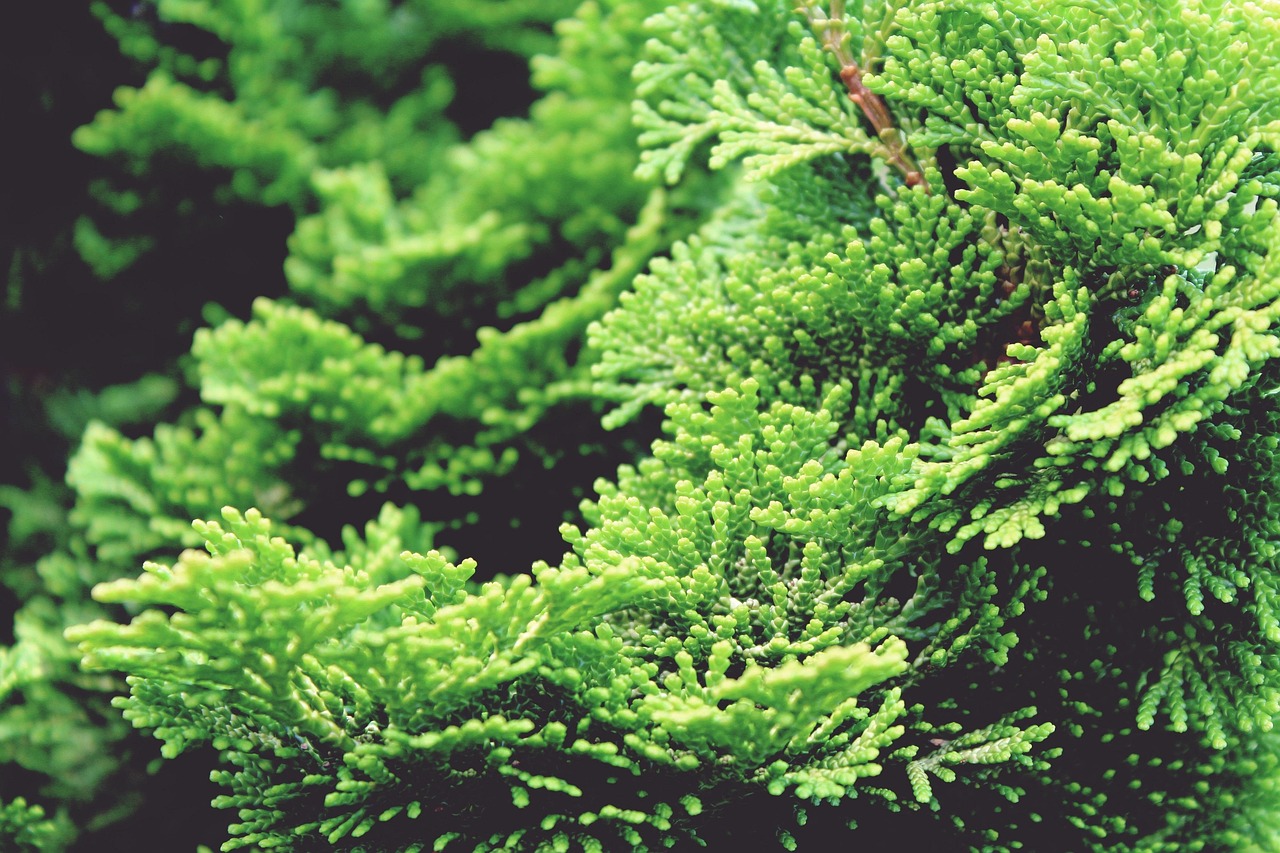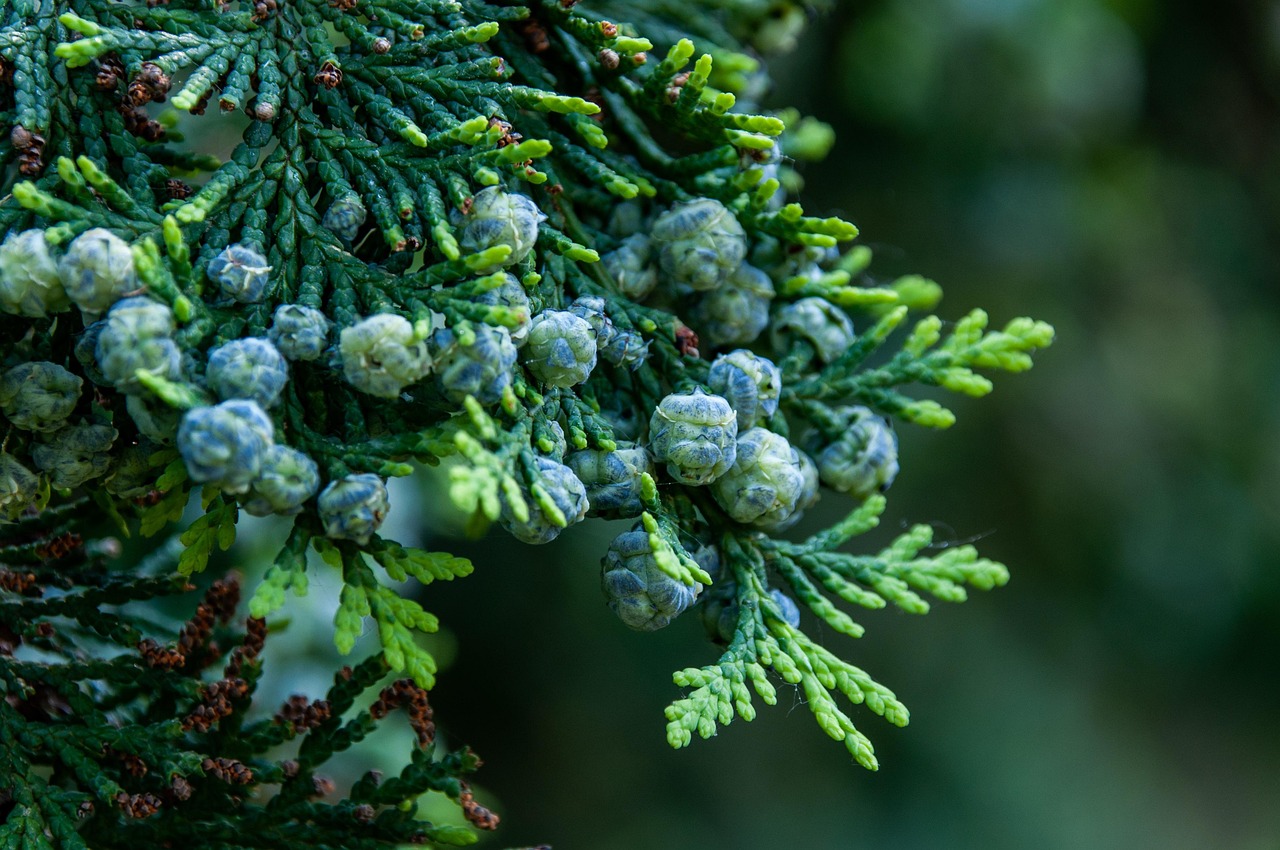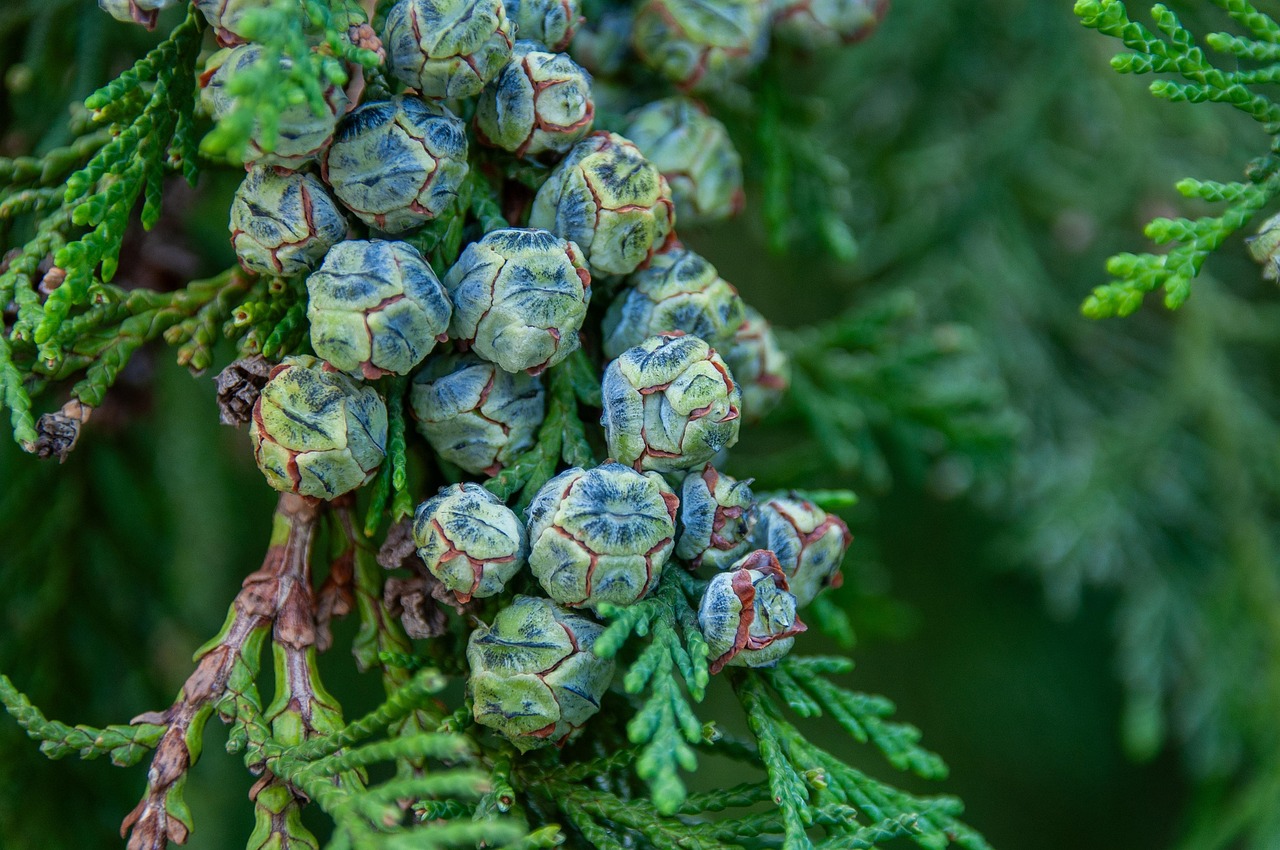The Italian Cypress tree (Cupressus sempervirens) is known for its fast growth, typically reaching heights of 3 to 4 feet per year. When planted as formal hedges, these trees can establish a dense and tall privacy screen within just a few years.
Italian Cypress trees are a popular choice for formal hedges due to their elegant appearance and ability to thrive in various climates. These trees have a narrow, upright growth habit that adds vertical interest to landscapes. Additionally, their evergreen foliage provides year-round privacy and serves as an effective windbreak.

Understanding the growth rate of these trees is essential for anyone considering them for landscaping. The growth rate can be influenced by several factors, including soil quality, climate conditions, water availability, and proper care. In optimal conditions, the Italian Cypress can grow rapidly, making it an attractive option for those looking to establish a hedge quickly.
Growth Rate Overview
The growth rate of Italian Cypress trees can vary based on environmental factors. In general, these trees are known to exhibit a strong growth pattern during their early years. Here are some key points to consider about their growth:
- Typical Height: Italian Cypress trees can grow between 40 to 60 feet tall when fully mature.
- Width: The mature width of these trees ranges from 3 to 5 feet.
- Annual Growth Rate: They can grow 3 to 4 feet each year under ideal conditions.
To better understand the growth characteristics of the Italian Cypress, here is a simple table illustrating their growth over time:

| Age (Years) | Height (Feet) | Notes |
|---|---|---|
| 1 | 3-4 | Establishment phase; rapid initial growth. |
| 3 | 9-12 | Developing height; good for privacy screening. |
| 5 | 15-20 | Mature height establishes; dense foliage. |
| 10 | 30-40 | Fully established; excellent windbreak and privacy. |
When planting Italian Cypress trees for formal hedges, timing is essential. Spring and fall are the best seasons for planting. During these times, the trees can establish roots before summer heat or winter cold sets in. Proper care during these early stages is crucial for achieving the desired height and density.
Irrigation plays a significant role in the growth rate of Italian Cypress trees. These trees prefer well-drained soil but require consistent moisture during their first few years. Overwatering can lead to root rot, while underwatering can stunt growth. A balanced watering schedule is vital for promoting healthy growth.
Soil Requirements
The ideal soil for Italian Cypress trees is a sandy or loamy texture with good drainage. Here are some important aspects regarding soil requirements:

- pH Level: A slightly acidic to neutral pH (between 6.0 and 7.0) is preferred.
- Nutrient Content: Fertile soil rich in organic matter supports healthy growth.
- Drainage: Well-draining soil prevents water accumulation around the roots.
Before planting, it is advisable to conduct a soil test. This will help determine if any amendments are needed to create the best environment for your Italian Cypress trees. Ensuring proper soil conditions will maximize the growth rate and overall health of your formal hedge.
As with any plant species, understanding the specific needs of Italian Cypress trees allows gardeners and landscapers to create thriving hedges that enhance their outdoor spaces. These trees not only provide privacy but also add beauty and structure to gardens.
Watering and Irrigation Practices
Proper watering is crucial for the growth and health of Italian Cypress trees. These trees are relatively drought-tolerant once established, but young trees require consistent moisture to develop strong root systems. Understanding optimal watering practices can enhance growth rates significantly.

Watering Frequency
The frequency of watering depends on several factors, including soil type, weather conditions, and the tree’s age. Here are some guidelines to follow:
- Newly Planted Trees: Water every 2-3 days for the first month to help establish roots.
- Young Trees (1-3 Years): Water once a week during dry spells. Ensure the soil remains moist but not soggy.
- Mature Trees: Water every 2-4 weeks. These trees can tolerate longer dry periods but benefit from occasional deep watering.
Irrigation Systems
Installing an irrigation system can help manage watering more effectively. Here are some options to consider:
- Drip Irrigation: This method delivers water directly to the roots, minimizing waste and ensuring efficient usage.
- Soaker Hoses: These hoses release water slowly along their length, providing even moisture to the soil.
- Sprinkler Systems: While effective, ensure that the foliage is not too wet to prevent disease.
Fertilization Requirements
Fertilization plays a vital role in promoting healthy growth and enhancing the overall vigor of Italian Cypress trees. Proper nutrient management supports rapid growth and longevity.
Types of Fertilizers
When fertilizing Italian Cypress trees, consider the following types:
- Granular Fertilizers: These release nutrients slowly over time. A balanced fertilizer, such as a 10-10-10 NPK blend, is suitable for young trees.
- Liquid Fertilizers: These provide immediate nutrient availability and can be applied during the growing season for a quick boost.
- Organic Options: Compost or well-rotted manure can improve soil structure and provide essential nutrients without chemical additives.
Fertilization Schedule
A proper fertilization schedule ensures that the trees receive adequate nutrition throughout their growth stages. Here’s a recommended plan:
- Spring: Apply a balanced fertilizer as new growth begins.
- Mid-Summer: A second application of a slow-release fertilizer can be beneficial.
- Fall: Consider a light feeding with organic matter to prepare the tree for winter.
Pest and Disease Management
Italian Cypress trees are generally resilient; however, they can be susceptible to certain pests and diseases. Identifying issues early can help maintain healthy growth rates.
Common Pests
The following pests may affect Italian Cypress trees:
- Spider Mites: These tiny insects can cause yellowing leaves and webbing. Regular monitoring and insecticidal soap can help control them.
- Cypress Bark Beetles: They bore into the bark, weakening the tree. Ensuring good tree health can minimize infestations.
- Aphids: These pests suck sap from new growth. Neem oil or insecticidal soap can effectively manage aphid populations.
Disease Prevention
Diseases such as root rot and blight can threaten Italian Cypress trees. Preventive measures include:
- Avoid Overwatering: Ensure that soil is well-drained to prevent root rot.
- Select Disease-Resistant Varieties: Some cultivars may show increased resistance to common diseases.
- Pruning: Regularly prune dead or infected branches to promote air circulation and reduce disease spread.
By adopting these practices, gardeners can ensure robust growth rates for their Italian Cypress hedges while maintaining healthy, thriving trees. Proper care and attention will lead to beautiful formal hedges that enhance any landscape.
Pruning and Maintenance Practices
Pruning is an essential aspect of maintaining Italian Cypress trees, especially when they are planted as formal hedges. Regular pruning promotes healthy growth, enhances the shape, and reduces the risk of disease. Understanding the best practices for pruning can significantly impact the overall appearance and health of your hedge.
When to Prune
The timing of pruning can influence the growth and health of Italian Cypress trees. Here are some recommended periods to consider:
- Late Winter to Early Spring: This is the ideal time for major pruning. It allows for new growth to flourish as the growing season begins.
- Summer: Light trimming can be done to maintain shape. Avoid heavy pruning during this time as it may stress the tree.
- Fall: It is generally not recommended to prune in the fall, as it may expose fresh cuts to winter damage.
Pruning Techniques
Employing proper pruning techniques ensures that your Italian Cypress trees remain healthy and attractive. Here are some effective methods:
- Thinning: Remove select branches to improve airflow and light penetration within the hedge. This helps reduce disease risk.
- Shearing: For formal hedges, uniform shearing can create a neat appearance. Use sharp hedge clippers for clean cuts.
- Removing Dead or Diseased Branches: Regularly inspect trees and remove any branches that show signs of disease or damage to promote overall health.
Mulching for Healthier Growth
Applying mulch around Italian Cypress trees can contribute to healthier growth by helping retain moisture and suppress weeds. Here’s how to effectively use mulch:
Benefits of Mulching
Mulching provides several advantages for Italian Cypress trees:
- Moisture Retention: Mulch helps to keep the soil consistently moist, which is particularly beneficial during dry periods.
- Weed Suppression: A layer of mulch can prevent weeds from competing for nutrients and water.
- Temperature Regulation: Mulch acts as an insulator, keeping roots cooler in summer and warmer in winter.
Types of Mulch
Selecting the right type of mulch is important for maximizing benefits. Consider these options:
- Bark Mulch: Provides a natural look and breaks down slowly, enriching the soil over time.
- Pine Needles: Lightweight and acidic, they are excellent for retaining moisture while adding nutrients as they decompose.
- Wood Chips: These provide good insulation but should be replenished regularly as they decompose more quickly.
Environmental Considerations
The growth rate and health of Italian Cypress trees can also be influenced by environmental factors. Being aware of these can help optimize their growth.
Climate Adaptability
Italian Cypress trees thrive in Mediterranean climates, characterized by hot, dry summers and mild, wet winters. Here are some considerations regarding climate:
- Heat Tolerance: These trees are well-suited for hot environments but may require additional watering during extreme heat.
- Cold Sensitivity: While they can tolerate some cold temperatures, prolonged exposure to freezing conditions can damage younger trees.
- Wind Resistance: Italian Cypress trees are generally wind-resistant but may need protection during severe storms, especially when young.
Urban Considerations
Planting Italian Cypress trees in urban areas presents unique challenges. Here are some factors to keep in mind:
- Pavement and Soil Compaction: Urban settings often have compacted soil, affecting root development. Consider amending soil before planting.
- Adequate Space: Ensure sufficient space for growth, as these trees can reach considerable heights. Avoid planting too close to buildings or other structures.
- Avoid Chemical Exposure: Be cautious with applications of pesticides or herbicides as these can affect tree health if improperly applied.
By understanding and applying effective pruning techniques, mulching methods, and considering environmental factors, gardeners can create thriving Italian Cypress hedges that enhance their landscapes while ensuring healthy growth rates. Proper maintenance will result in lush, green privacy screens that stand out beautifully throughout the seasons.
Additional Considerations for Planting Italian Cypress
When planning to plant Italian Cypress trees as formal hedges, it is crucial to consider a few additional factors beyond growth rates and maintenance. These factors can significantly impact not only the growth rate but also the longevity and health of your hedges.
Spacing and Density
The spacing of Italian Cypress trees is a key element in creating an effective formal hedge. Proper spacing allows each tree to receive adequate sunlight and nutrients without competing with its neighbors. Here are some guidelines for spacing:
- For Dense Hedges: Space trees 3 to 4 feet apart. This will ensure a thick privacy screen in a relatively short time.
- For More Airflow: Space trees 5 to 6 feet apart. This allows for better air circulation, reducing disease risk.
- Consider Mature Size: Always account for the mature height and width of the trees when determining spacing to avoid overcrowding.
Environmental Benefits
Italian Cypress trees offer several environmental benefits, making them an excellent choice for landscaping. Here are a few:
- Carbon Sequestration: Like all trees, Italian Cypress absorbs carbon dioxide from the atmosphere, helping to combat climate change.
- Habitat Creation: These trees can provide shelter and food for various wildlife species, contributing to biodiversity in your garden.
- Soil Stabilization: The root systems of Italian Cypress help prevent soil erosion, especially on slopes or loose soils.
Choosing the Right Variety
There are several varieties of Italian Cypress that may suit different landscape needs. Some common options include:
- Standard Italian Cypress (Cupressus sempervirens): The classic form with a tall, narrow shape, ideal for traditional hedges.
- Columnar Italian Cypress: A more compact version that is perfect for tight spaces while still providing a formal appearance.
- Weeping Italian Cypress: This variety features branches that droop gracefully, providing an elegant alternative for ornamental gardens.
Selecting the right variety based on your landscape design can enhance the overall aesthetic and functional qualities of your hedges.
Conclusion
The Italian Cypress tree is a remarkable choice for creating formal hedges thanks to its rapid growth rate, distinctive beauty, and adaptability. Understanding the growth requirements, including watering, soil conditions, pruning, and pest management, is essential for achieving optimal results. Proper spacing and variety selection further enhance their effectiveness in landscape design.
By following best practices in care and maintenance, gardeners can establish thriving Italian Cypress hedges that not only provide privacy but also contribute positively to the environment. These elegant trees can transform any outdoor space into a beautiful and functional area. Whether in urban settings or expansive gardens, the Italian Cypress stands out as a symbol of grace and resilience.
With thoughtful planning and diligent care, your Italian Cypress trees will flourish, making a lasting addition to your landscape for years to come.
